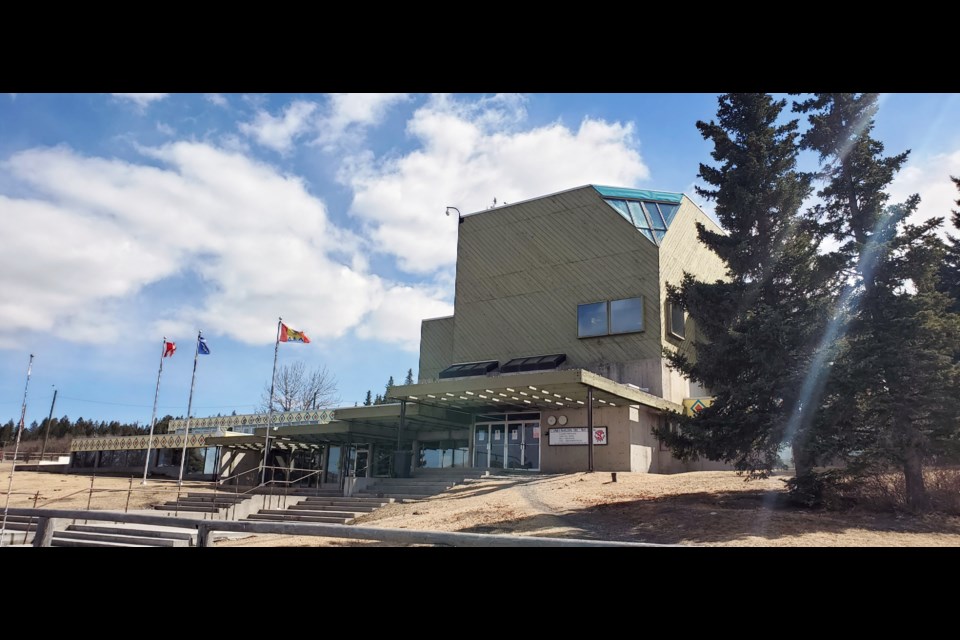ÎYÂRHE NAKODA – Backed up sewage and unpotable water should be a thing of the past for residents of the most northern Îyârhe Nakoda First Nation community by this time next year.
Big Horn, 24 kilometres west of Nordegg and about 276 km northwest of Mînî Thnî, is building new water and wastewater treatment infrastructure following a visit from Indigenous Services Canada in 2019 that proved upgrades were needed.
Goodstoney CEO Raymond Greenwood and Blair Birch, the capital projects and public works director at Stoney Tribal Administration, had previously discussed the idea of inviting Indigenous Services Canada for a tour, as the agency had never previously visited, according to Greenwood.
“It was through that meeting [in 2019] that we were able to get this approved because it really is needed,” he said.
In Big Horn, residential properties use individual wells to draw water and are serviced by an individual sewage disposal system at each location.
A water and wastewater system assessment report completed by BCL Engineering Ltd. in 2020 identified 42 existing residences’ septic tanks and septic fields were at the end of their serviceable life and in need of replacement. The walls of the septic tanks have failed and corroded through, and multiple tank lids are cracked and unstable.
“There’s multiple problems with many of the existing private systems, including higher maintenance, potential for backups – which did and do occur, systems being undersized to handle treatment capacity and improperly constructed or failing systems,” said Birch.
“There’s just a whole series of different issues with them. But then, of course, there’s the health and environmental side of that as well, with things not functioning properly.”
On the water treatment side, it was identified that many of the individual wells servicing each residence were also insufficient, producing poor quality or unpotable drinking water.
“That came out of the same feasibility study that was undertaken and funded by Indigenous Services Canada,” said Birch. “The recommendation was to build a new water treatment plant, and extend a water distribution system built some 15 years ago to serve the school and 10 homes that are already connected to that system.
“When this is all done, all 48 homes in the community, the health centre, the public works building and other facilities will have the capability to be tied into a pipe water system. Basically, the whole community will be on pipe water service and nobody will have to rely on individual wells anymore.”
All individual wastewater systems in need of upgrades will also be replaced. The first phase of that project, covering 10 homes, has already begun and is expected to be complete in July. The second phase, covering 25 homes, is expected to be complete by November.
In addition to the existing residences, an additional eight septic tanks and fields are required immediately for new housing scheduled for construction. Private sewage systems will be designed per the Alberta Private Sewage Systems Standard of Practice.
Birch said the design for both the water and wastewater projects was completed in tender earlier this year and split into two contracts, which have both been awarded. Water treatment infrastructure is anticipated to begin construction in June, to be completed by June 2024.
Some of the project activities include clearing vegetation, removal of topsoil, digging and re-grading. The proposed construction method is to use an isolated open cut for the distribution pipe’s water and wetland crossings.
The total cost for both projects is $14 million and is funded by Indigenous Services Canada, which provided another $1.8 million to upgrade the community’s band office into a more functional cultural centre last spring.
That project included retrofitting the building to include office spaces and meeting rooms on the main floor, while the lower floor was redeveloped into a community space, including the addition of a dental office and daycare under the provision of the community’s health centre.
The Local Journalism Initiative is funded by the Government of Canada. The position covers Îyârhe (Stoney) Nakoda First Nation and Kananaskis Country.



